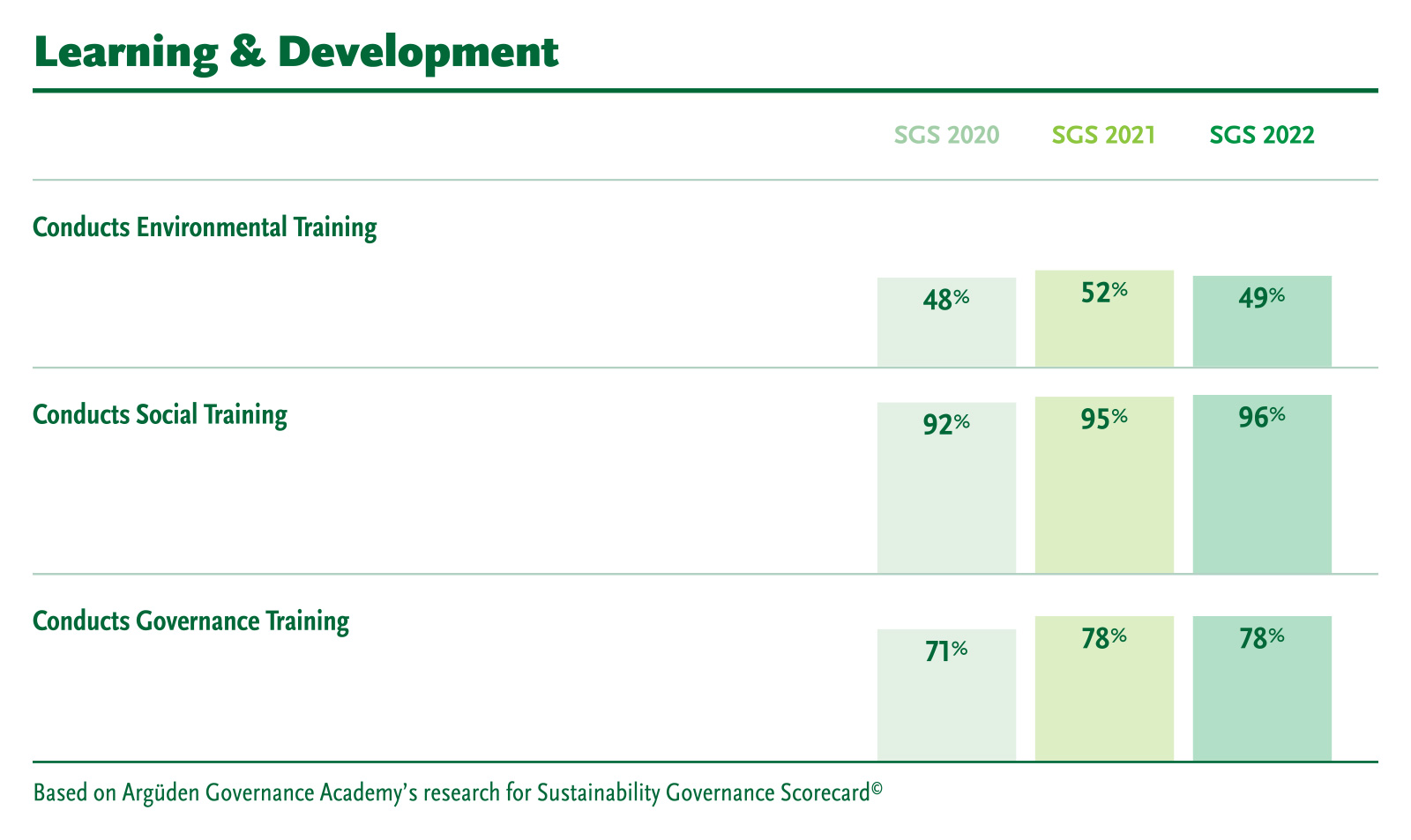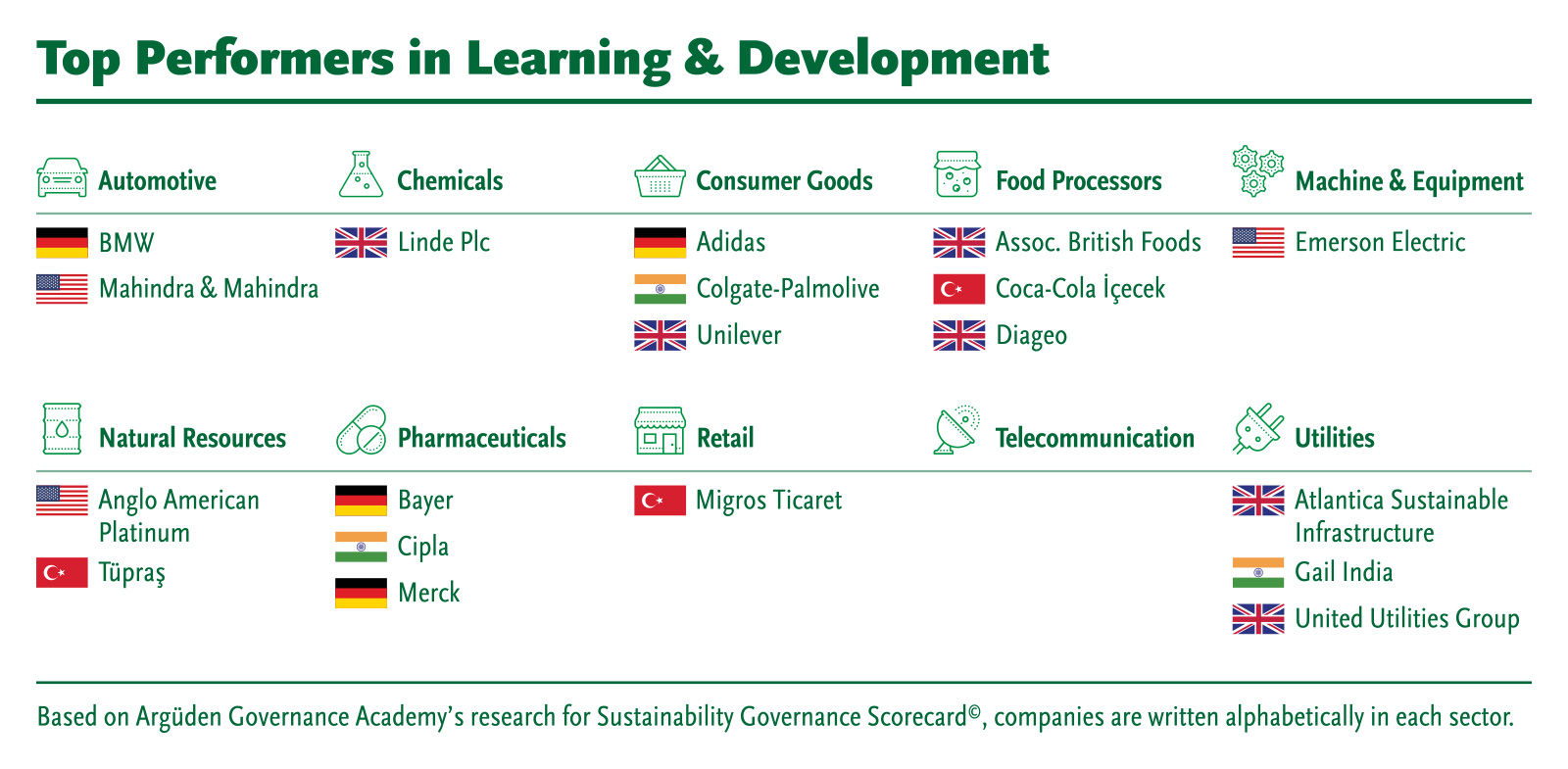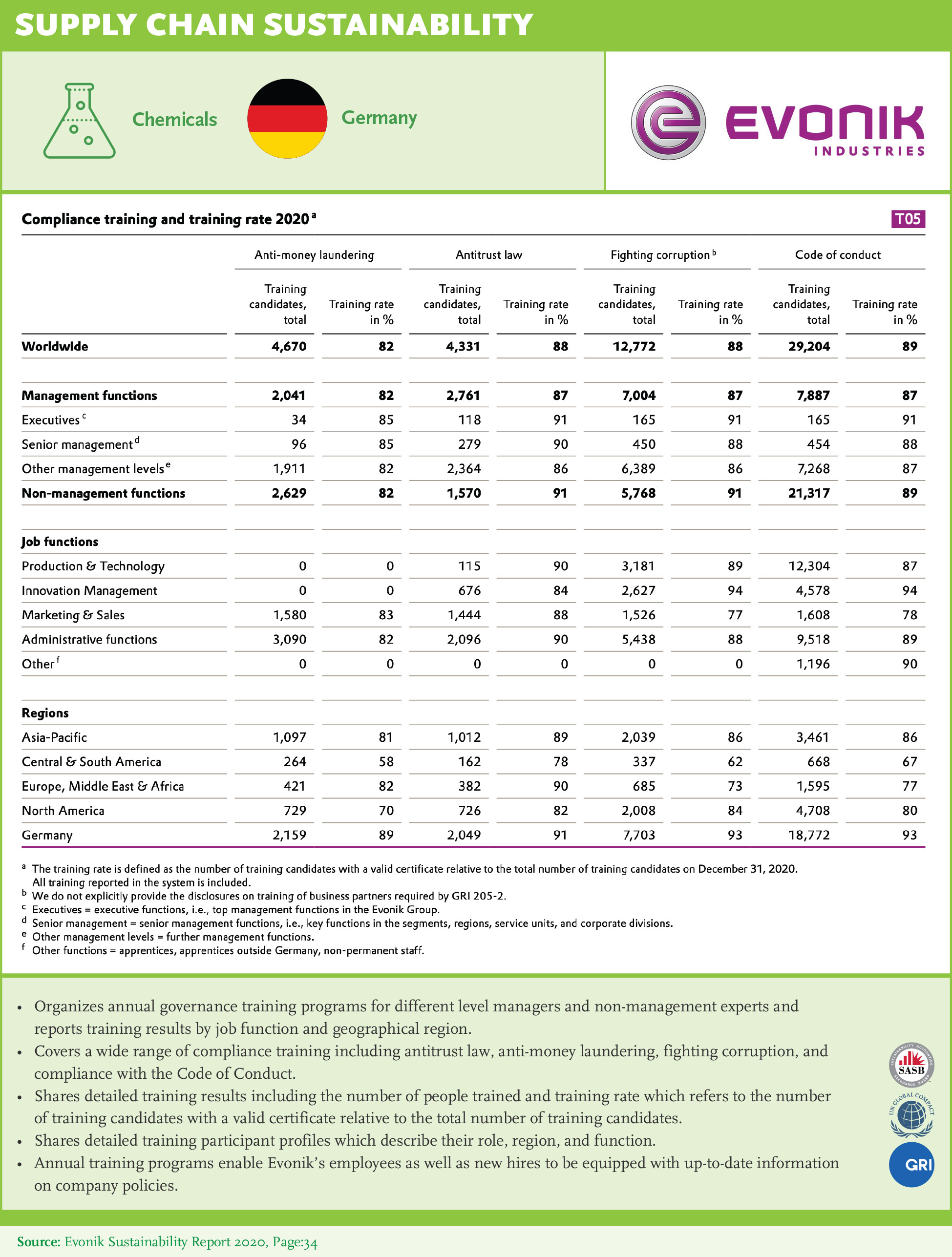
Good Practice Examples
Recommendations
Adopt a learning mindset, it is a journey: Sustainability is a continuous journey. To improve the quality of the journey, a learning mindset and environment are essential. Lessons learned should be utilized to improve decision-making processes, skill gaps and required mindset changes need to be addressed through training, and sustainability practices need to be integrated into the company’s processes.
Train your workforce in ESG: Ensure coverage of learning initiatives across related sustainability areas (eg: climate change, unconscious bias, compliance).
Report results by geography, cover management and employees: What is being done in different levels and jurisdictions of the company matters, the entire organization should step-up to embrace sustainability as a way of doing business. Detailed disclosure on these practices signal to investors that the company is taking action to develop its human capital in sustainability.
Think of building capacity in your ecosystem: Companies should ensure their training and action plans encompass a wide range of stakeholders including the supply chain and local communities.
Establish a learning loop for continuous improvement by disclosing remedial action to address gaps: Best-practice companies disclose gap assessment and how they plan to address gaps.
Provide board leadership and oversight for deployment: Boards need to take action to ensure that the sustainability agenda of the corporation is an integral part of its culture and systems to assure learning and continuous improvement.
Incorporate lessons learned into the organizations processes and culture: For this purpose, the key sustainability issues need to be identified and incorporated into strategies, policies, objectives, and associated management systems with a particular view towards value creation opportunities.


